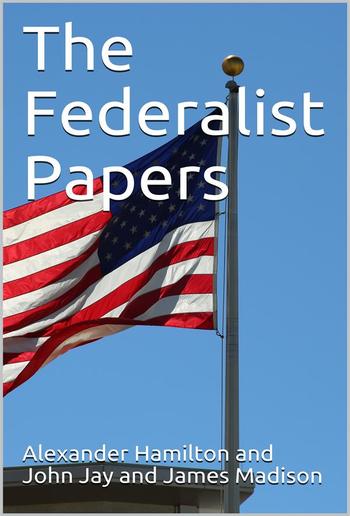
James Madison - The Federalist Papers
The Federalist Papers
James Madison
Description
The Federalist (later known as The Federalist Papers) is a collection of 85 articles and essays written by Alexander Hamilton, James Madison, and John Jay under the pseudonym "Publius" to promote the ratification of the United States Constitution. The first 77 of these essays were published serially in the Independent Journal, the New York Packet, and The Daily Advertiser between October 1787 and April 1788. A two-volume compilation of these 77 essays and eight others was published as The Federalist: A Collection of Essays, Written in Favour of the New Constitution, as Agreed upon by the Federal Convention, September 17, 1787 by publishing firm J. & A. McLean in March and May 1788. The collection was commonly known as The Federalist until the name The Federalist Papers emerged in the 20th century.
"Federalist No. 10" is generally regarded as the most important of the 85 articles from a philosophical perspective. In it, Madison discusses the means of preventing rule by majority faction and advocates a large, commercial republic. This is complemented by "Federalist No. 14", in which Madison takes the measure of the United States, declares it appropriate for an extended republic, and concludes with a memorable defense of the constitutional and political creativity of the Federal Convention. In "Federalist No. 84", Hamilton makes the case that there is no need to amend the Constitution by adding a Bill of Rights, insisting that the various provisions in the proposed Constitution protecting liberty amount to a "bill of rights". "Federalist No. 78", also written by Hamilton, lays the groundwork for the doctrine of judicial review by federal courts of federal legislation or executive acts. "Federalist No. 70" presents Hamilton's case for a one-man chief executive. In "Federalist No. 39", Madison presents the clearest exposition of what has come to be called "Federalism". In "Federalist No. 51", Madison distills arguments for checks and balances in an essay often quoted for its justification of government as "the greatest of all reflections on human nature."
According to historian Richard B. Morris, the essays that make up The Federalist Papers are an "incomparable exposition of the Constitution, a classic in political science unsurpassed in both breadth and depth by the product of any later American writer."
The Federalist Papers were written to support the ratification of the Constitution, specifically in New York. Whether they succeeded in this mission is questionable. Separate ratification proceedings took place in each state, and the essays were not reliably reprinted outside of New York; furthermore, by the time the series was well underway, a number of important states had already ratified it, for instance Pennsylvania on December 12. New York held out until July 26; certainly The Federalist was more important there than anywhere else, but Furtwangler argues that it "could hardly rival other major forces in the ratification contests"—specifically, these forces included the personal influence of well-known Federalists, for instance Hamilton and Jay, and Anti-Federalists, including Governor George Clinton. Further, by the time New York came to a vote, ten states had already ratified the Constitution and it had thus already passed—only nine states had to ratify it for the new government to be established among them; the ratification by Virginia, the tenth state, placed pressure on New York to ratify. In light of that, Furtwangler obs

